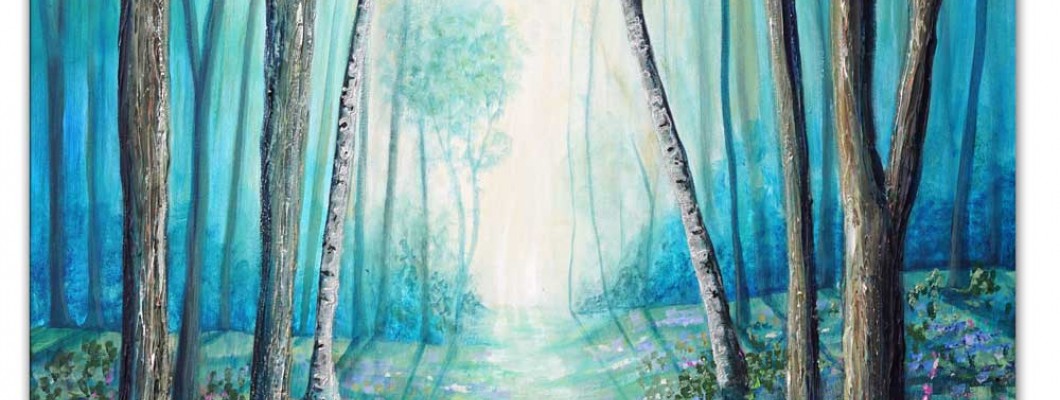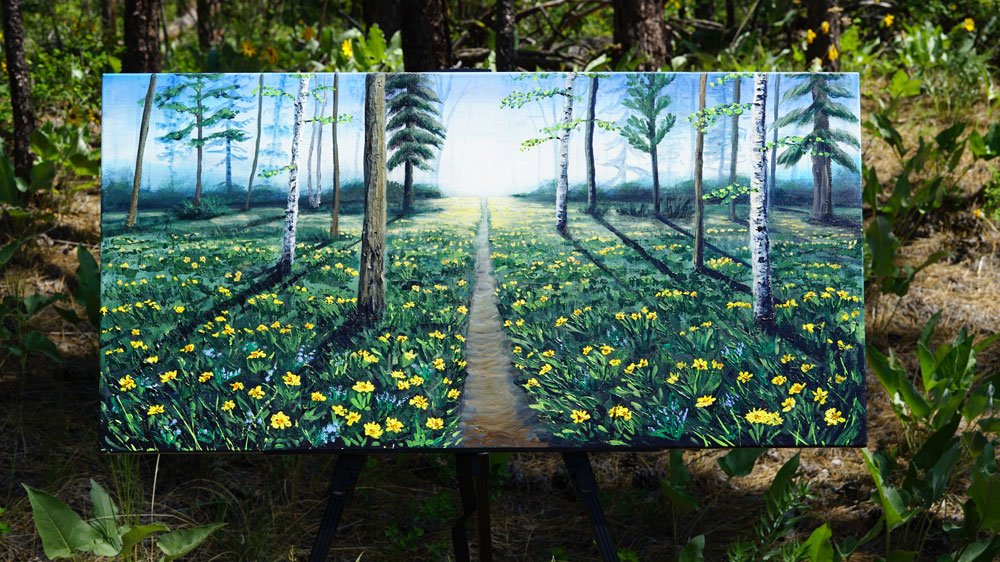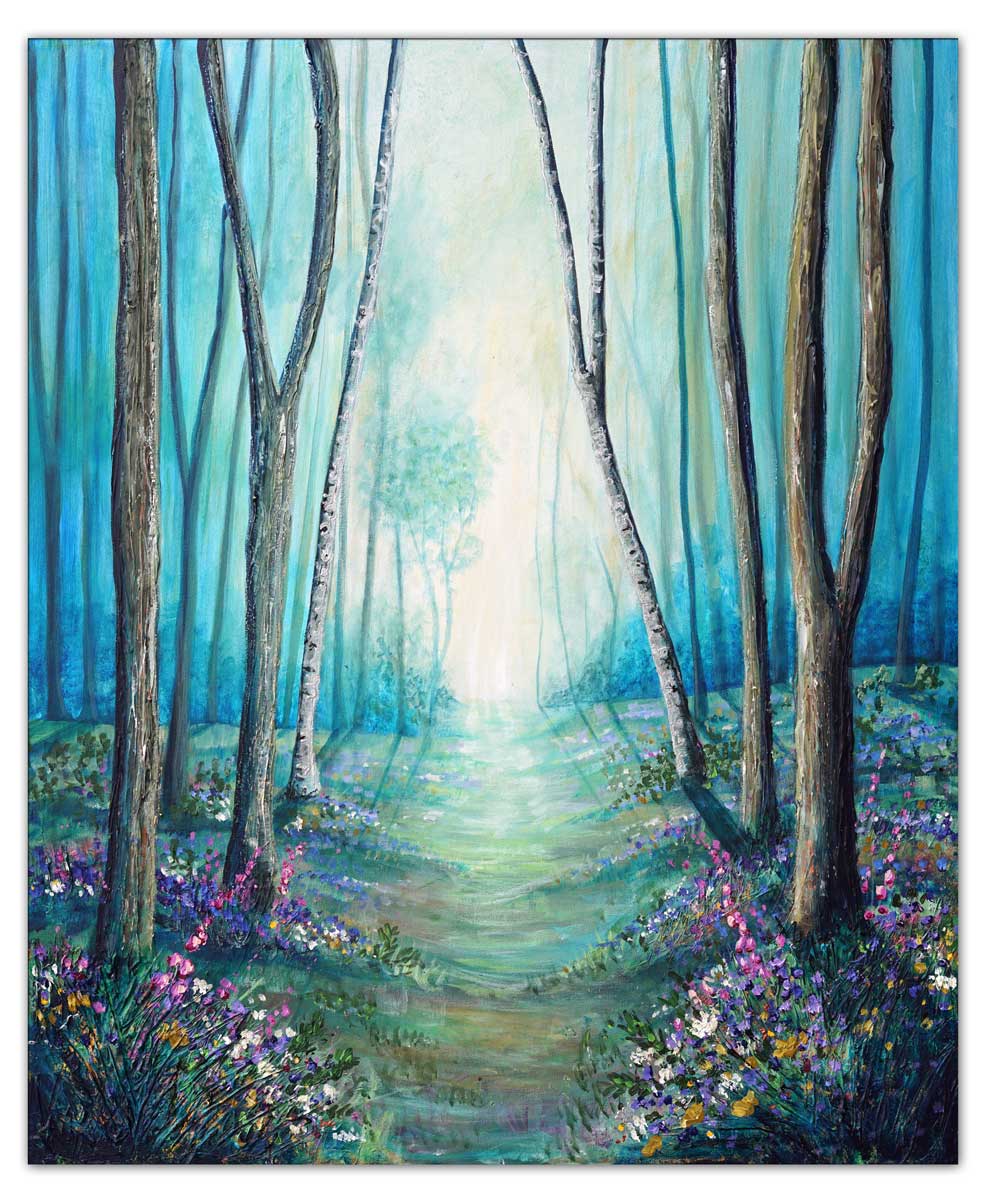
Step into the mystical world of ancient forests, where art and nature intertwine to create mesmerizing landscapes on canvas. In this article, we will delve into the enchanting realm of forest paintings, unveiling the secrets and artistic interpretations hidden within.
These ancient woods have long been a subject of intrigue and inspiration for artists throughout history. From the breathtaking autumn hues to the dappled sunlight filtering through the towering trees, each brush stroke captures the ethereal beauty of nature's masterpiece.
Soft Stillness of the Forest by Amanda Dagg
History and Significance of Forest Paintings
Forest paintings have a rich history dating back centuries. The allure of these natural landscapes has fascinated artists from various eras, each leaving their unique mark on the genre. In the early Renaissance period, artists such as Albrecht Altdorfer and Titian sought to capture the forest's mystique, often depicting religious or mythological scenes within its depths. These works not only showcased the artists' technical skill but also conveyed a sense of wonder and reverence for nature.
As the centuries progressed, the romantic movement brought forth a new wave of forest paintings. Artists like Caspar David Friedrich and John Constable embraced nature's emotional and spiritual aspects, creating works that evoked a sense of sublime beauty. The forest became a symbol of the untamed and uncontrollable forces of the natural world, captivating viewers with its raw power and untamed wilderness.
Famous Artists Known for Their Forest Paintings
Throughout art history, numerous renowned artists have left an indelible mark on the genre of forest paintings. One such artist is the French Impressionist Claude Monet. His paintings depicting Fontainebleau's forest exemplify his fascination with capturing the fleeting effects of light and atmosphere. Monet's loose brushwork and vibrant colour palettes bring the forest to life, inviting viewers to immerse themselves in the scene.
Another notable artist known for his forest paintings is the Dutch master Jacob van Ruisdael. His meticulously detailed landscapes often feature dense, towering forests that exude a sense of tranquillity and serenity. Ruisdael's ability to capture the intricate play of light and shadow within the forest creates a sense of depth and realism that is truly awe-inspiring.
Different Styles and Techniques Used in Forest Paintings
Forest paintings encompass a wide range of styles and techniques, each contributing to the overall aesthetic and mood of the artwork. From the delicate brushstrokes of the Impressionists to the precise detailing of the Realists, artists have employed various approaches to convey their interpretation of the forest.
The Impressionists, emphasizing capturing the fleeting effects of light and atmosphere, often employed loose brushwork and vibrant colour palettes. Their aim was not to depict nature with photographic accuracy but rather to capture the essence and mood of the forest through their subjective impressions.
On the other hand, Realist artists, such as Gustave Courbet, focused on capturing the minute details of the forest with precision and accuracy. Their works often showcased the intricate textures of the foliage, the play of light and shadow, and the subtle variations in colour. By meticulously rendering these elements, Realist artists aimed to create a sense of realism that transported viewers into the heart of the forest.
Symbolism and Meanings Behind Forest Paintings
Forest paintings are often laden with symbolism and deeper meanings. The forest itself can represent many concepts, such as the cycle of life and death, the passage of time, or the human connection to nature. Additionally, elements within the paintings, such as specific trees, animals, or even weather conditions, may carry symbolic significance.
For example, the oak tree, with its strength and longevity, is often associated with wisdom and endurance. In forest paintings, the presence of an oak tree may symbolize resilience and the ability to withstand the test of time. Similarly, the presence of animals, such as deer or birds, can represent the harmony between humanity and nature.
How to Appreciate and Interpret Forest Paintings
Appreciating and interpreting forest paintings requires a keen eye and an understanding of the artist's intent. When viewing a forest painting, take a moment to observe the composition, colours, and brushwork. Pay attention to how the artist has captured the play of light and shadow, the textures of the foliage, and the overall atmosphere of the scene.
Consider the emotions evoked by the artwork. Does the painting convey a sense of tranquillity and serenity, or does it evoke a more mysterious and haunting atmosphere? By immersing yourself in the artist's world, you can begin to unravel the hidden narratives and meanings within the forest painting.
The Allure of Nature in Forest Paintings
The allure of nature in forest paintings lies in its ability to transport viewers to a realm of beauty, mystery, and tranquillity. The forest, with its towering trees, dappled sunlight, and vibrant colours, captivates our senses and ignites our imagination. It offers a respite from the fast-paced modern world, allowing us to reconnect with the natural world and find solace in its embrace.
Forest paintings invite us to pause and appreciate the intricate beauty of the natural world. They remind us of the importance of preserving and protecting these ancient woods, ensuring that future generations can experience the same sense of wonder and awe.
Popular Forest Painting Subjects and Themes
While each forest painting is unique in its interpretation and style, certain subjects and themes are commonly found in the genre. One popular subject is the changing seasons, particularly the vibrant colours of autumn. Artists often showcase the mesmerizing hues of yellow, red, and orange, creating a visual symphony of colour that captures the fleeting beauty of nature.
Another prevalent theme is the interplay between light and shadow. Artists use the dappled sunlight filtering through the canopy to create dramatic contrasts and evoke a sense of depth and mystery within the forest. By skillfully manipulating light and shadow, artists bring the forest to life, infusing their paintings with a sense of enchantment.

Path through the Balsamroot by Amanda Dagg
Forest Painting Exhibitions and Galleries
For art enthusiasts and nature lovers alike, visiting forest painting exhibitions and galleries is a wonderful way to immerse oneself in the beauty of these artworks. Many museums and art institutions curate exhibitions dedicated to forest paintings, showcasing the works of both renowned masters and emerging artists.
These exhibitions offer a unique opportunity to see the forest through different artists' eyes and explore this captivating subject's diverse interpretations. Whether it's a solo exhibition focusing on the works of a particular artist or a thematic exhibition exploring the symbolism and meaning behind forest paintings, these curated showcases provide a deeper understanding and appreciation of the genre.
Conclusion: The Timeless Beauty of Forest Paintings
In conclusion, forest paintings hold a timeless allure that continues to captivate and inspire viewers. From the hauntingly realistic works of the Renaissance to the impressionistic interpretations of the Impressionists, each brushstroke carries the essence of the ancient woods. These paintings not only showcase the beauty of nature but also invite us to reflect on our own connection to the natural world.
Through the centuries, artists have sought to capture the ethereal beauty, tranquillity, and mystery of the forest. By exploring the history, styles, techniques, and symbolism of forest paintings, we can gain a deeper appreciation for the artistic interpretations hidden within these enchanting landscapes. So, take a moment to step into the mystical world of ancient woods and let the forest paintings transport you to a realm of beauty, mystique, and artistic inspiration.




